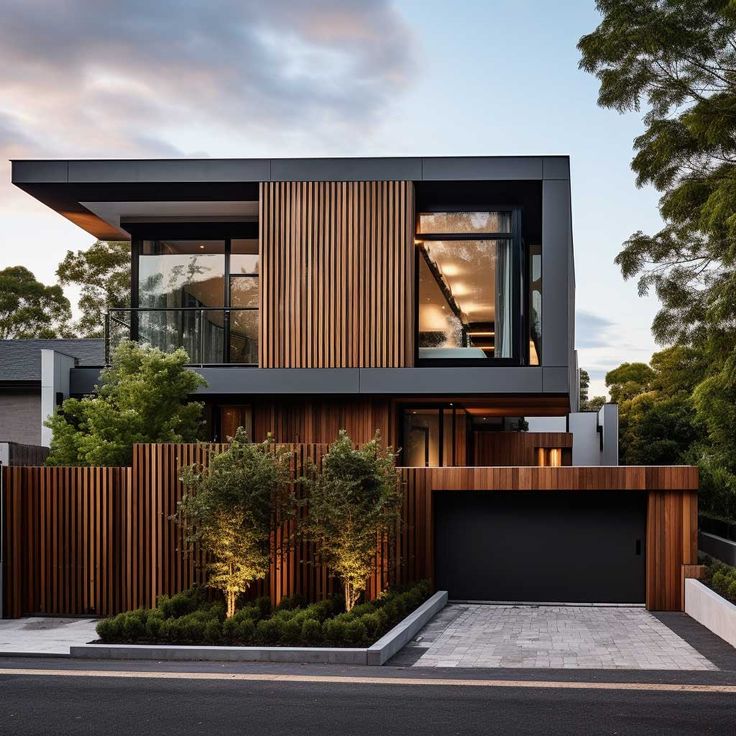In the pursuit of building more energy-efficient homes, homeowners and architects are increasingly turning to cladding as a key solution. Cladding, a protective layer of material added to the exterior of a building, offers several benefits beyond just aesthetics.
Among its many advantages, energy efficiency stands out as a critical factor in modern construction. This blog post explores how Cladding enhances energy efficiency in contemporary homes, making it an essential component in sustainable building practices.
The Role of Cladding in Modern Architecture
Cladding serves multiple purposes in modern architecture. While its primary function is to protect the structure from environmental elements like rain, wind, and sun, cladding also contributes to the overall energy performance of a building. It acts as a barrier against the elements, helps regulate temperature, and reduces the amount of energy required to heat or cool the interior spaces.
Cladding materials vary widely, from traditional options like wood and brick to more modern choices like metal, composite panels, and high-performance insulation boards. Each material offers unique benefits, but all share the common goal of improving the building’s thermal efficiency.
Understanding Thermal Insulation
Thermal insulation is one of the most significant factors in a building’s energy efficiency. It involves reducing the transfer of heat between the inside and outside of a home. Cladding plays a vital role in this process by acting as an additional layer of insulation. By minimizing heat loss in winter and heat gain in summer, cladding helps maintain a comfortable indoor temperature without relying heavily on heating or cooling systems.
The Science Behind Insulation
Heat transfer occurs through three primary mechanisms: conduction, convection, and radiation. Cladding materials are designed to combat these processes in the following ways:
- Conduction: This is the transfer of heat through materials. Cladding materials with low thermal conductivity, such as insulation boards, reduce heat transfer between the building’s interior and exterior.
- Convection: This involves the movement of air and the heat it carries. Cladding systems often include air gaps or ventilated spaces that disrupt convective currents, further reducing energy loss.
- Radiation: Heat can also be transferred through radiation, primarily from the sun. Reflective cladding materials, like certain metals and coated panels, can reflect solar radiation away from the building, reducing heat gain.
Types of Cladding Materials and Their Impact on Energy Efficiency
The choice of cladding material significantly impacts a building’s energy performance. Different materials offer varying levels of insulation and protection against environmental factors.
1. Timber Cladding
Timber is a natural insulator, making it an excellent choice for energy-efficient cladding. It has low thermal conductivity, meaning it reduces the amount of heat transferred into or out of the building. Additionally, timber cladding provides a natural aesthetic appeal and can be sourced sustainably, contributing to the overall environmental friendliness of the home.
2. Brick and Stone Cladding
Brick and stone have long been used as cladding materials due to their durability and thermal mass. These materials absorb and store heat, releasing it slowly over time. This characteristic helps maintain a stable indoor temperature, reducing the need for artificial heating and cooling.
3. Metal Cladding
Metal cladding, often made from aluminum or steel, is known for its strength and durability. While metal is not a natural insulator, modern metal cladding systems are typically paired with insulation layers to enhance energy efficiency. Reflective coatings on metal cladding can also help reduce heat gain from solar radiation, making it a popular choice in hot climates.
4. Composite Panels
Composite panels are engineered materials that combine different layers to provide excellent insulation properties. These panels often include a core of rigid insulation sandwiched between two layers of durable material, such as metal or plastic. Composite panels are highly effective at reducing heat transfer and can be tailored to meet specific energy efficiency goals.
5. High-Performance Insulation Boards
Insulation boards, often made from materials like expanded polystyrene (EPS) or polyisocyanurate (PIR), are designed to provide superior thermal performance. These boards are typically used as part of a cladding system, offering an additional layer of insulation that significantly enhances the building’s energy efficiency.
The Benefits of Cladding for Energy Efficiency
The energy efficiency benefits of cladding are numerous and contribute to both environmental sustainability and cost savings for homeowners.
1. Reduced Energy Consumption
By improving thermal insulation, cladding reduces the amount of energy needed to heat or cool a home. This decrease in energy consumption leads to lower utility bills and a smaller carbon footprint. Over time, the savings on energy costs can offset the initial investment in high-quality cladding materials.
2. Enhanced Comfort
Cladding helps maintain a consistent indoor temperature, reducing the need for heating and cooling systems to operate continuously. This leads to a more comfortable living environment, with fewer temperature fluctuations and drafts.
3. Improved Acoustic Insulation
In addition to thermal benefits, many cladding materials also provide sound insulation. This is particularly beneficial in urban areas where noise pollution can be a concern. A well-insulated home is quieter and more peaceful, contributing to overall well-being.
4. Environmental Sustainability
Choosing energy-efficient cladding materials contributes to the overall sustainability of a building. By reducing energy consumption, cladding helps lower greenhouse gas emissions and supports efforts to combat climate change.
The Future of Cladding in Energy-Efficient Homes
As the construction industry continues to prioritize energy efficiency and sustainability, the role of cladding in modern homes will only grow in importance. Advances in material science and building technology are leading to the development of new cladding systems that offer even greater energy savings and environmental benefits.
Future trends may include the integration of smart technologies into cladding systems, such as materials that can adapt to changing weather conditions or cladding that incorporates solar panels to generate electricity.
Conclusion
Cladding is much more than just an aesthetic feature of a building; it is a critical component in enhancing energy efficiency and sustainability. By selecting the right cladding materials and systems, homeowners can significantly reduce their energy consumption, improve comfort, and contribute to a greener future.
As the demand for energy-efficient homes continues to rise, cladding will remain at the forefront of modern construction practices, helping to create homes that are both beautiful and environmentally responsible.


